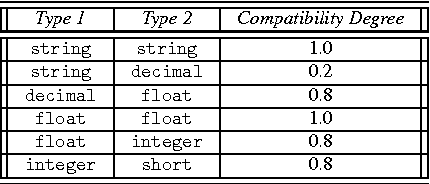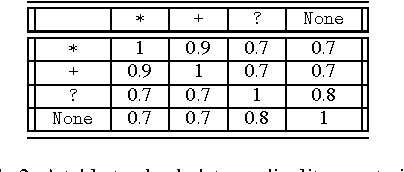Domenico Ursino
XML Matchers: approaches and challenges
Jul 10, 2014



Abstract:Schema Matching, i.e. the process of discovering semantic correspondences between concepts adopted in different data source schemas, has been a key topic in Database and Artificial Intelligence research areas for many years. In the past, it was largely investigated especially for classical database models (e.g., E/R schemas, relational databases, etc.). However, in the latest years, the widespread adoption of XML in the most disparate application fields pushed a growing number of researchers to design XML-specific Schema Matching approaches, called XML Matchers, aiming at finding semantic matchings between concepts defined in DTDs and XSDs. XML Matchers do not just take well-known techniques originally designed for other data models and apply them on DTDs/XSDs, but they exploit specific XML features (e.g., the hierarchical structure of a DTD/XSD) to improve the performance of the Schema Matching process. The design of XML Matchers is currently a well-established research area. The main goal of this paper is to provide a detailed description and classification of XML Matchers. We first describe to what extent the specificities of DTDs/XSDs impact on the Schema Matching task. Then we introduce a template, called XML Matcher Template, that describes the main components of an XML Matcher, their role and behavior. We illustrate how each of these components has been implemented in some popular XML Matchers. We consider our XML Matcher Template as the baseline for objectively comparing approaches that, at first glance, might appear as unrelated. The introduction of this template can be useful in the design of future XML Matchers. Finally, we analyze commercial tools implementing XML Matchers and introduce two challenging issues strictly related to this topic, namely XML source clustering and uncertainty management in XML Matchers.
* 34 pages, 8 tables, 7 figures
 Add to Chrome
Add to Chrome Add to Firefox
Add to Firefox Add to Edge
Add to Edge